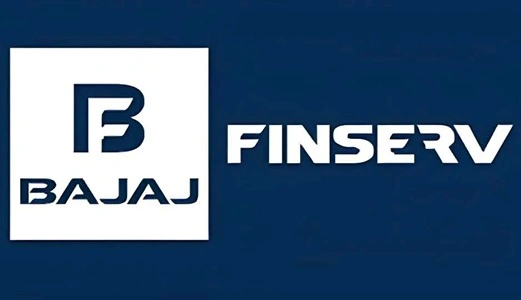Bajaj Finserv, a part of the Bajaj Group, is one of India’s leading financial services companies, offering a diversified portfolio of products across lending, insurance, and wealth management. Established in 2007 as a separate entity from Bajaj Auto, Bajaj Finserv has evolved into a trusted name in the financial sector, catering to individual consumers and businesses alike. With a focus on innovation, customer-centricity, and digital transformation, Bajaj Finserv has cemented its position as a financial powerhouse.
This article explores Bajaj Finserv’s business model, revenue streams, and strategies that contribute to its success in the competitive financial services industry.
Overview of Bajaj Finserv’s Business Model

Bajaj Finserv operates on a B2C (Business-to-Consumer) and B2B (Business-to-Business) model, offering products that address diverse financial needs, including lending, insurance, and investments. Its business model is built around leveraging technology, cross-selling opportunities, and a customer-centric approach to deliver financial solutions efficiently.
Key Features of Bajaj Finserv’s Business Model:
- Diversified Offerings:
- Bajaj Finserv operates across three primary verticals: lending, insurance, and wealth management.
- Digital-First Approach:
- With its digital platforms like the Bajaj Finserv App, it provides customers with a seamless experience, from loan applications to investment tracking.
- Cross-Selling:
- The company capitalizes on its wide customer base to cross-sell products, such as offering insurance to loan customers or investment products to policyholders.
- Asset-Light Lending:
- Bajaj Finserv focuses on short-term consumer loans and unsecured credit, ensuring faster loan disbursals with minimal operational risk.
How Does Bajaj Finserv Earn Money?
Bajaj Finserv generates revenue through multiple streams, leveraging its wide range of products and customer base. Here’s how the company earns money:
a. Lending (Bajaj Finance Limited)
- Primary Revenue Driver:
- Bajaj Finance Limited, the lending arm of Bajaj Finserv, is one of India’s largest non-banking financial companies (NBFCs). The company earns revenue through:
- Interest Income: Charged on loans, including personal loans, home loans, business loans, and consumer durable loans.
- Processing Fees: Collected on loan applications, varying by loan type and amount.
- Penalties and Late Fees: Charged for delayed payments or non-repayment of loans.
- Bajaj Finance Limited, the lending arm of Bajaj Finserv, is one of India’s largest non-banking financial companies (NBFCs). The company earns revenue through:
- Key Loan Categories:
- Consumer Durable Loans: Financing for products like smartphones, electronics, and home appliances.
- Personal Loans: Unsecured loans for emergencies, travel, or other personal needs.
- Business Loans: Loans for small and medium enterprises (SMEs) to support working capital and expansion.
- Housing Finance: Home loans and loan against property (LAP) offerings.
b. Insurance (Bajaj Allianz General and Life Insurance)
- Bajaj Finserv earns revenue through its insurance subsidiaries, Bajaj Allianz General Insurance and Bajaj Allianz Life Insurance. Key revenue streams include:
- Premium Income: Collected from policyholders for life, health, motor, and general insurance policies.
- Investment Income: Generated by investing premiums in government bonds, mutual funds, and other securities.
- Renewals and Commissions: Earned from policy renewals and cross-selling other insurance products.
- Popular insurance offerings include:
- Health insurance plans.
- Term life insurance.
- Motor insurance for two-wheelers and cars.
- Travel and property insurance.
c. Investments and Wealth Management
- Bajaj Finserv provides investment advisory services and wealth management solutions. Revenue is generated through:
- Mutual Fund Distribution Fees: Commission earned by distributing mutual funds.
- Portfolio Management Services (PMS): Charges for managing high-net-worth individuals’ (HNI) portfolios.
- Brokerage Fees: Earned through its stockbroking services, Bajaj Financial Securities.
d. EMI Cards and Wallets
- Bajaj Finserv’s EMI Network Card is a popular product that allows customers to convert purchases into easy monthly installments (EMIs). Revenue is earned through:
- Annual fees for card membership.
- Interest charges on EMIs for select categories.
- Merchant commissions for enabling EMI transactions.
e. Digital Platforms and Subscriptions
- Bajaj Finserv earns revenue through its digital services and subscriptions, including:
- Bajaj Finserv Health: A digital platform offering health consultations, diagnostics, and healthcare subscriptions.
- Digital EMI Store: Revenue from facilitating online purchases through its EMI card.
- Financial Fitness Reports: Subscription fees for personalized credit and financial health reports.
f. Cross-Selling and Partnerships
- Bajaj Finserv leverages its existing customer database to cross-sell products, earning commissions through:
- Insurance products sold to loan customers.
- Mutual funds and investment plans marketed to insurance or loan customers.
- Strategic partnerships with merchants, retailers, and e-commerce platforms drive additional revenue.
g. Asset Management
- Bajaj Finserv earns management fees from its asset management services, including:
- Investments in mutual funds and fixed-income securities.
- Corporate investment portfolios.
h. Late Payment Penalties
- Penalties for missed or delayed payments contribute to Bajaj Finserv’s non-interest income, boosting overall revenue.
Why Bajaj Finserv’s Model Works
Bajaj Finserv’s business model is successful due to its diversified offerings, technological innovation, and customer-first approach. Here’s why it works:
a. Diversified Revenue Streams
- The company’s presence in lending, insurance, and wealth management ensures a balanced revenue mix, reducing dependency on any single segment.
b. Strong Digital Ecosystem
- Bajaj Finserv’s digital platforms provide a seamless user experience, making it easier for customers to access loans, insurance, and investments.
c. Cross-Selling Opportunities
- With a vast customer base, Bajaj Finserv effectively cross-sells multiple financial products, maximizing revenue per customer.
d. Focus on Consumer Durables
- Its specialization in consumer durable loans, a high-demand category in India, ensures steady cash flow and customer loyalty.
e. Asset-Light Model
- By focusing on short-term loans and leveraging partnerships, Bajaj Finserv minimizes asset risks while maintaining profitability.
Financial Performance
Bajaj Finserv’s innovative and diversified business model has led to robust financial performance.
Revenue Growth
- Bajaj Finserv reported consolidated revenues of over ₹70,000 crores in FY 2023, driven by strong growth in its lending and insurance segments.
Market Position
- Bajaj Finance Limited has over 60 million customers, making it one of India’s most trusted NBFCs.
Profitability
- Despite macroeconomic challenges, Bajaj Finserv maintains healthy profit margins due to its focus on high-margin products and efficient cost management.
Challenges and Opportunities
Challenges
- Regulatory Risks:
- NBFCs and insurance companies face stringent regulations that can impact operations and profitability.
- Competition:
- Intense competition from banks, fintech startups, and other NBFCs.
- Economic Slowdowns:
- Consumer spending and loan repayments may decline during economic downturns.
Opportunities
- Digital Transformation:
- Expanding digital services to reach underserved markets in Tier 2 and Tier 3 cities.
- New Product Offerings:
- Launching innovative products like microloans, ESG-based investments, and personalized insurance plans.
- Global Expansion:
- Exploring international markets for wealth management and insurance services.
Future Prospects
Bajaj Finserv’s growth trajectory is promising, with key focus areas including:
- Scaling digital lending and enhancing its EMI card network.
- Expanding insurance offerings with personalized health and life insurance plans.
- Strengthening its wealth management arm to cater to HNIs and retail investors.
- Leveraging AI and big data to offer predictive financial solutions.
Conclusion
Bajaj Finserv’s business model exemplifies innovation, customer focus, and diversification. By effectively combining lending, insurance, and wealth management under one umbrella, the company has built a robust ecosystem that caters to a wide range of financial needs. With its strong digital presence and focus on expansion, Bajaj Finserv is well-positioned to continue its dominance in the financial services sector, driving growth and delivering value to its customers and stakeholders.

